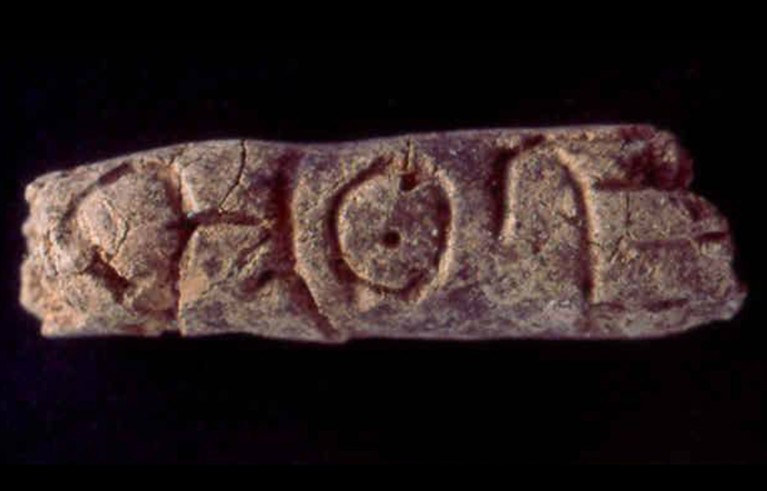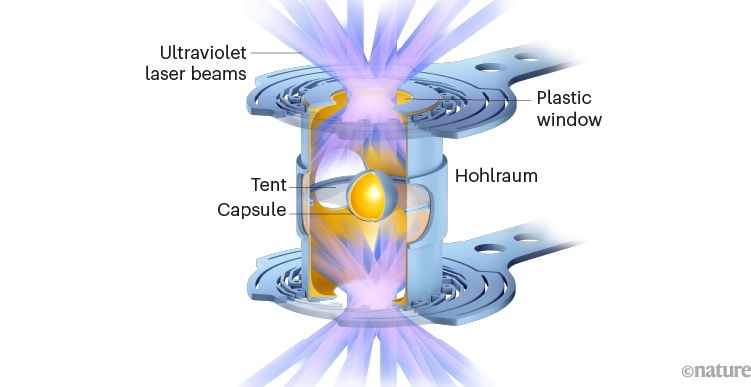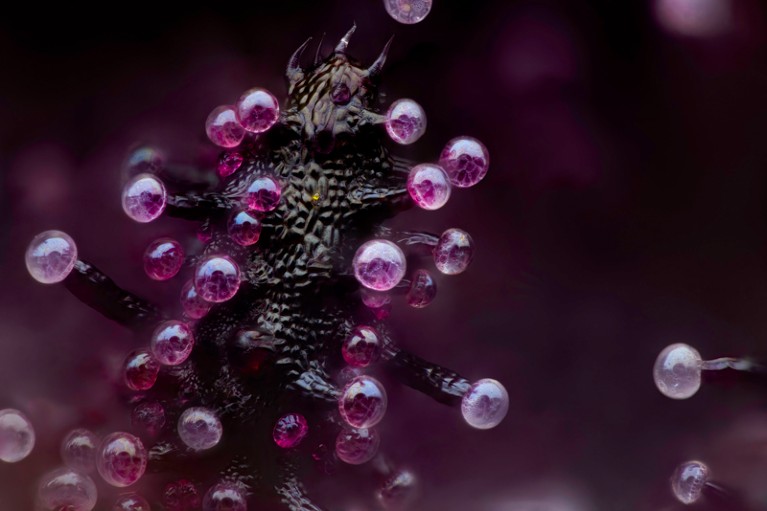Hello Nature readers, would you like to get this Briefing in your inbox free every day? Sign up here.

The small clay cylinders are engraved with symbols thought to be letters.Credit: Glenn Schwartz, Johns Hopkins University
Clay cylinders that are 4,400 years old, unearthed from a tomb in Syria, are inscribed with traces of the earliest known alphabetic writing system. The tomb, discovered in Umm el-Marra in 2004, contained four of these finger-sized cylinders, engraved with eight distinct symbols. Although the characters do not correspond to a known language, archaeologist Glenn Schwartz analysed the inscriptions and suggested that the symbols represent sounds that correspond to a, i, k, l, n, s and y. The inscriptions might record people’s names or label objects in the tomb, Schwartz says.
Nature | 4 min read
Negotiators from 175 countries are in Busan, South Korea, to thrash out what many hope will be a legally binding United Nations treaty to drastically cut plastic pollution. Some will aim to reduce production of non-essential plastics; others, particularly those whose countries make petrochemicals, will focus on waste management. Research suggests where policies can make a difference:
• Ban or charge for single-use plastics — but be careful to tighten any loopholes, such as allowing shops to offer thicker, ‘reusable’ plastic bags that end up in the bin anyway.
• Make plastic producers pay — by charging by weight, making them pay for recycling, or by rewarding the inclusion of recycled material. This depends on having effective, safe recycling centres.
• Crack down on microplastics by banning microbeads from cosmetics. Microplastic filters in washing machines can help too, but it would be better to promote a shift in how textiles are made — a perfect candidate for an international treaty.
Nature | 5 min read
References: Science paper, Environment America report & Science of The Total Environment paper
Immigration rules restricting the number of foreign students in some countries are crunching universities’ budgets and their ability to contribute to global science. A survey of 365 universities in 66 countries found that 41% of institutions saw a drop in the number of postgraduate enrolments this year compared with last year, and 31% reported declines in undergraduate student numbers. Universities say that restrictive government policies and problems obtaining visas were major factors in the declines. Canada reported some of the sharpest drops, with undergraduate enrolment declining by 30% following a new government cap on the number of international students entering the country.
Nature | 5 min read
Tracking turtles can lead researchers to meadows of sea grass more reliably than satellite imagery. Researchers tagged 53 green turtles (Chelonia mydas), which feed on sea grass, in the Red Sea. The tag relayed the turtles’ location to satellites when they surfaced for air after eating. If a turtle appeared several times in a similar spot, the team deduced there was a meadow nearby. Using this data, they searched 38 locations and found patches of seagrass in each, whilst only 40% of the locations they identified with a remote sensing-based map yielded a positive result.
Science | 5 min read
Reference: Proceedings of the Royal Society B paper
Features & opinion
The US National Ignition Facility is the only laboratory where a nuclear-fusion reaction has generated more energy than it consumed. The US$3.5-billion facility is not a power plant; it is a proving ground for fusion research. It was designed with a singular goal: to compress hydrogen isotopes into a white-hot core, where their nuclei would meld to create helium and enough surplus energy to drive a cascade of fusion reactions. This graphics-rich feature walks us through how it achieved this historic milestone and what it means for the future of fusion energy.
Nature | 11 min read

Illustration by Tomáš Müller
At the beginning of an experiment, the National Ignition Facility creates a weak infrared laser pulse that is split into 192 beams. These beams are amplified more than one quadrillion times and converted into ultraviolet energy before they converge in a 130,000-kilogram spherical ‘target’ chamber. The ultraviolet beams enter the target through plastic windows at the top and bottom of a pencil-eraser-sized gold cylinder, known as a hohlraum.
Geochemist Robyn Pickering runs an annual quiz — filled with in-jokes — for her team of ten at the University of Cape Town, asking team members for five question submissions each. Across the world, epigeneticist Chuck Epstein leads colleagues from his group to the ice rink, a tradition that has recruited more and more people from their floor to skate over the years. Nature asked group leaders how they thank their colleagues for their hard work at the end of the year, and the little things they do year-round to show their appreciation.
Nature | 9 min read
“Like many in the social sciences, I was trained to think of hypothesis testing as the main job of a researcher, with exploration hardly worthy of publication,” writes Balazs Aczel. That unbalance does the field a disservice, he argues. Exploratory studies help to properly plan hypothesis testing and inform reproducibility-boosting registered reports. Journals should make it clear that they welcome exploratory studies, he suggests, and students should be taught the skills to “let the data talk first”.
Nature | 5 min read
Image of the week

Credit: Chris Romaine/Kandid Kush/Nikon Small World Photomicrography Competition
This microscopy image of a cannabis leaf took third place at the Nikon Small World photography awards. The purple, bead-like structures are trichomes — tiny glands that coat the leaves. They contain cannabinoids, including the psychoactive and medicinal compounds for which the plant is known.
See more of the month’s sharpest science shots, selected by Nature’s photo team. (Chris Romaine/Kandid Kush/Nikon Small World Photomicrography Competition)
Today, I’m enjoying a visualization made by polar-marine biologist Huw Griffiths using the Spilhous projection of the globe, which allows us to see all the world’s oceans as the single connected body of water that they are. Using work from ocean scientist Michael Meredith and climate-visualization specialist Niklas Röber, it shows the vast churning system of global currents, with Antarctica at the centre. For lots more Spilhouse-projection-based fun, check out this 2023 paper in Scientific Data.
Help keep this newsletter churning in the right direction. Please send your feedback to [email protected].
Thanks for reading,
Flora Graham, senior editor, Nature Briefing
With contributions by Jacob Smith
Want more? Sign up to our other free Nature Briefing newsletters:
• Nature Briefing: Careers — insights, advice and award-winning journalism to help you optimize your working life
• Nature Briefing: Microbiology — the most abundant living entities on our planet — microorganisms — and the role they play in health, the environment and food systems
• Nature Briefing: Anthropocene — climate change, biodiversity, sustainability and geoengineering
• Nature Briefing: AI & Robotics — 100% written by humans, of course
• Nature Briefing: Cancer — a weekly newsletter written with cancer researchers in mind
• Nature Briefing: Translational Research — covers biotechnology, drug discovery and pharma






